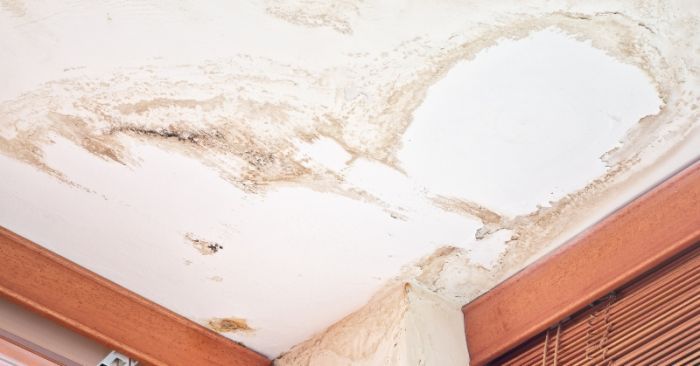Understanding the value of flood damage assessments is crucial for recognizing problems, assuring safety, and establishing an effective repair strategy.
Damage from water may be a difficult task for property owners if caused by natural catastrophes, faulty plumbing, or appliance faults. Handling it quickly is critical to avoiding long-term structural damage, mold development, as well as rising repair expenses. The water harm assessment procedure is critical for figuring out the amount of damage and developing a profitable restoration strategy.
The following piece discusses the significant steps in a water damage assessment along with how they are critical for achieving a thorough and effective cleanup.
Why a Water Damage Assessment Matters
Water damage isn't always as straightforward as it seems. Visible signs, such as wet carpet or water-stained walls often hide many detailed problems, such as moisture going through the drywall down to the structural components and into the subfloor. So one would think that it's just a little issue.
If you do not carry out an inspection, some of these problems remain and can stalemate you with very costly repairs later. During the inspection, you learn what kind of damage the area has undergone; you will also know what type of water it is and how urgent the repairs are.
This complete assessment makes it possible to notice any details and gives a base on which the rehabilitation team can build.
Steps in the Water Damage Assessment Process
A professional water damage assessment typically involves the following stages:
Step 1. Identifying the Source and Categorizing Water Types

The first step is identifying the source of the water intrusion. Whether it’s a leaky roof, burst pipe, or flooding, understanding the source is critical for addressing the issue.
Equally important is classifying the water type:
- Clean Water: From rain or broken supply lines, posing no significant health risks.
- Grey Water: Contaminated water from appliances or sinks that may harbor microbes.
- Black Water: Hazardous water from sources like sewage or floodwaters, requiring specialized handling.
Each category determines specific cleaning and restoration protocols, making accurate classification essential.
Step 2. Inspecting and Documenting Visible and Hidden Damage
During assessment, visible damage is duly checked, where the high-tech equipment helps find moisture perhaps not immediately apparent. Equipment such as moisture meters and infrared cameras help locate water trapped behind walls, under flooring, or in ceilings. This makes sure that all affected areas are encompassed, even those not easily visible to the naked eye.
During this phase, documentation is made in photos and elaborate notes, serving therefore as the guiding light in restoration and oftentimes a requirement for insurance claims.
Step 3. Assessing Structural Integrity
Water can compromise the structural integrity of a building, especially if left unattended for long periods. The assessment should focus on the following critical areas: walls, floors, and support beams- repairs or replacements must be undertaken based on this inspection. This is important for the safety and stability of the structure once the restoration effort starts.
Step 4. Developing a Restoration Plan
Depending on the results, a detailed restoration plan is drawn up. The plan will detail the sequence of activities involved, the time required, and the resources needed to restore the damage. It will also set priority for undertaking work on the most pressing nature, such as removing standing water or remedying structural weaknesses.
From Assessment to Action: Beginning the Restoration Process
Once the assessment is complete, the restoration process begins. Depending on the severity of the damage, the plan may include:
- Water Extraction: Removing standing water quickly to prevent further damage.
- Drying and Dehumidification: Industrial-grade equipment is used to remove residual moisture from the air and affected materials.
- Mold Remediation: If moisture has led to mold growth, it must be safely removed to ensure a healthy living environment.
- Repairs and Reconstruction: Damaged materials such as drywall, flooring, or insulation are repaired or replaced as needed.
A well-executed assessment ensures these steps are completed efficiently and effectively, minimizing downtime and reducing the overall cost of restoration.
The Role of Insurance in Water Damage Restoration
Insurance is, for a good number of property owners, an important mechanism to cover water damage restoration costs. What this entails is a detailed assessment report with photographs and repair estimates compiled to make it timelier for insurance companies to handle the claim. This assessment report constitutes proof of the extent of damage and sustains cases for reimbursement to the affected parties.
Benefits of a Professional Water Damage Assessment
It is tempting for the average hotelier to consider doing restoration by themselves. However, the assessment, in itself, would lack the precision and thoroughness that a professional water damage restoration assessment would have provided. Because the professionals own the tools and experience that allow them to see hidden damage, spot potential hazards, and formulate proper restoration plans, this would save time and money, and proper restoration of the property would restore its condition before the damage.
A professional water damage assessment brings about the peace of mind that every angle of a claim has been forwarded and there are next to no chances of recurring issues.
Conclusion
A water damage assessment is a critical first step in the restoration process, laying the foundation for effective repairs and long-term solutions. By understanding the extent of the damage, categorizing water types, and planning the necessary repairs, property owners can ensure their homes or businesses are restored quickly and thoroughly.
Post Comment
Be the first to post comment!
Related Articles




